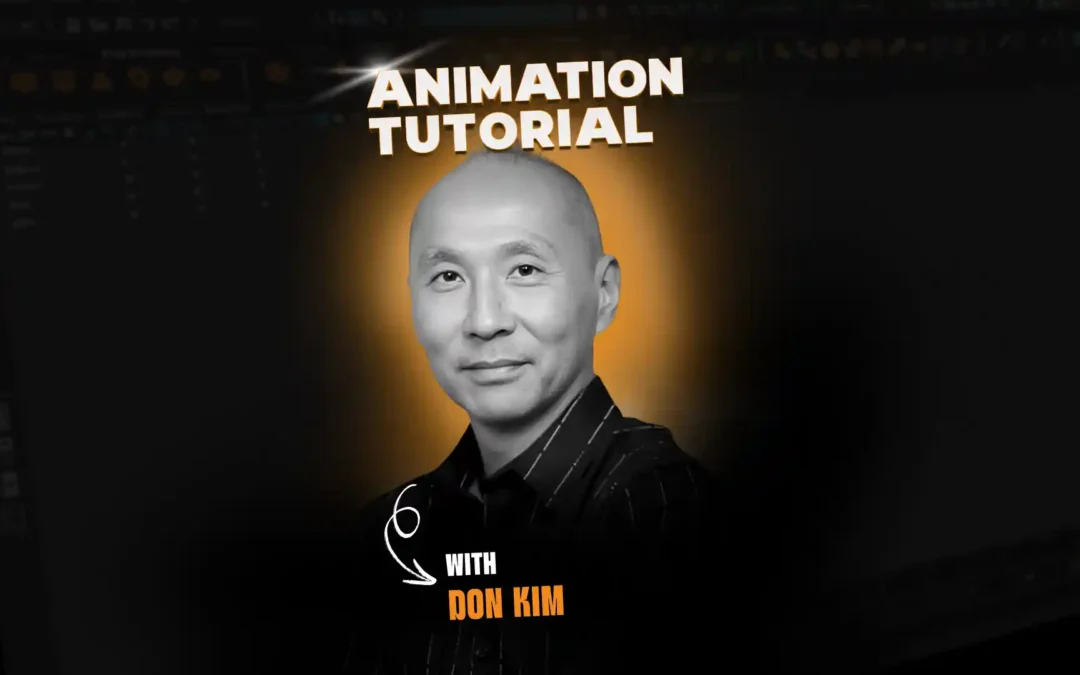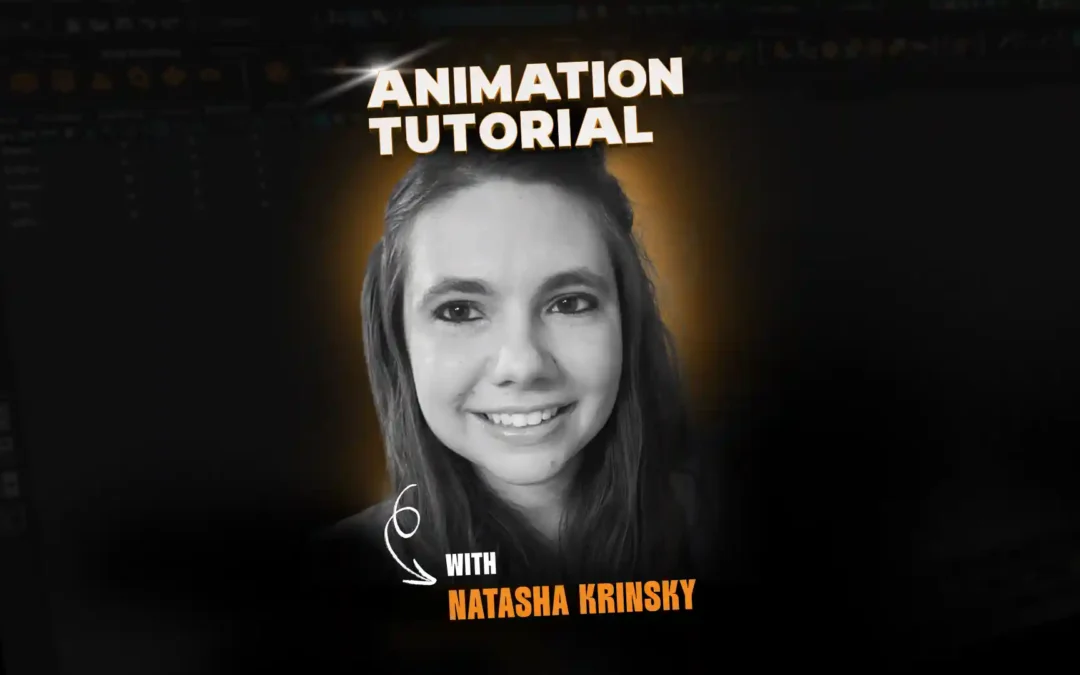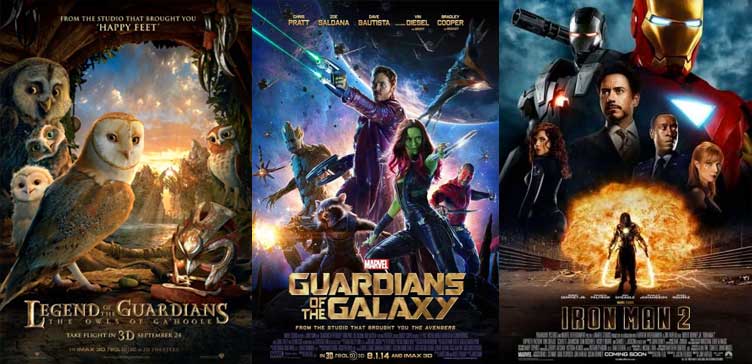
Calling all creature animators!
With creature animation on the rise, bringing realistic animations and creatures to life matters more than ever. Take it from one of our veteran animators, Nicole Herr, who has worked on various well known and loved characters from movies such as Iron Man 2, Guardians of the Galaxy, X-Men 2 and more! With over 19 years of experience, combined with her own thirst for knowledge and an undying passion for teaching intricacies of the craft, we’re more than stoked to have Nicole share her magic of bringing creature animation to life. Enjoy and become inspired!
-The Animation Mentor Crew
Tip #1: Creatures are Characters – Not Dumb Animals
One of the major things that I see in some creature animation is that they come across as just dumb animals. Not living, breathing, thinking characters. If I don’t know what my creature is thinking, their past history, and their motivation at the moment I am animating, I will lose some of the fine details that will make my shot stand as a solid part of the project that I am working on. Knowing as much as possible about who I am animating also helps when I hit artists block.
Remembering that Creatures are Characters too will go a long way in your animation.
For instance – If I know that my creature is a baby dragon, just learning to fly… I may put in that baby pigeon I watched learning to fly. I watched as his parents would push him to the edge of the balcony only to have him run back to the safety of the nest when he decided that he didn’t like the height, and that he didn’t need to jump. I saw the frustration in his parents as they literally shoved him off that same edge later that day. After that, he was confidently flying on and off the balcony. An amazing moment to see, a little creature that was full of character, a perfect memory absolutely fit for animating.
Watch this lecture excerpt with Nicole Herr as she walks through polishing a baby dragon
Tip #2: Fit the Animation Style to the Project You’re Working On
On all the projects that I have worked on, I have used reference in different ways. Some projects want the character to fit into a realistic environment, some are fantasy and they just want the character to move in a way that makes sense for that world. In the end, it’s about what works for the project you are working on at the moment.
Legend of the Guardians is a mid between cartoony and realism animation
CARTOONY CREATURE: Some movies are going to be creature in a cartoony world. You’ll see this in films like Open Season, Surf’s up, Legend of the Guardians. In these movies you have to mix the creature with the cartoon style. Depending on the film, you will find that the balance between creature and cartoon varies.
On Legend of the Guardians, to do this, they limited the rigs to the actual limitations of the birds themselves. Through animation testing, they found that limiting the rig’s abilities actually made us go back to the reference of the birds, we were encouraged to put our own performances into the owls, but we were also reminded that these were actual birds that we were animating. For instance, the eyes could only move as much as the real owls could, so we had to rotate the heads to complete the eyelines. The beaks were stiff down the ridgeline, so we had only the sides of the mouth to work with for dialogue shapes. A challenge, but very rewarding.
Time Warner Cable commercial featuring the dragon in Game of Thrones
FANTASY CREATURE: These are normally a mixture of various animals, possible world issues, etc. You’ll see fantasy creatures in shows like Game of Thrones, Watchmen, Sucker Punch, Harry Potter, Guardians of the Galaxy. In many of these movies, the fantasy creature has to work with live action plates, so you have to take into account what is happening in the plate itself before you animate on each shot. Even the actor’s eyelines will define what you can and can’t do in your shots.
When I was working on a commercial for Game of Thrones, the dragon was a mixture of many different creatures including: Bat, Chicken, Pigeon. There were little details that we pulled in from each animal to make him feel like he was really there. On this project we really pushed the idea that the little dragon was a character, not just a creature. He was lost, scared, and ultimately, searching for his mom. There were moments we were thinking that we pushed the human characteristics too far, but the client liked the animation that we did on it. If you watch the commercial, you will see the work that we all put into him to really get the audience to feel for him. We wanted the audience to be happy for him in the end when he found her.
I Am Legend deer sequence
REALISTIC CREATURE: Ultimately, many animated creatures, these are based on actual animals. These may be playing against real counterparts, or as a representation of the animals as a whole. Some of these realistic animals are in movies like: I Am Legend, Jungle Book, Sphere…
On I Am Legend the deer were based on actual deer movements… but with a twist. The director asked for little details to be amped up – the height of the jumps for instance, we had to push that to make the running sequence more frenetic… We found that we had to use a different deer species for the jumping reference as the original deer we were using could not jump as high as we were requested to do. It was all about making sure the actual physics of the animals were true, so we blended a few different animals into it, always remembering which deer was our master for the motion. Ultimately, we had to make it feel like they were really in the scene, not cartoons, so body mechanics were always on our minds while animating. What you really need to watch out for when you are doing realistic characters it that you don’t rotoscope the motion. You have to push the realism in the animation just enough to make sure that your animation doesn’t fall into the uncanny valley, but not so far that you fall into cartoony motion. Also remember that the director may want to see your video reference, so keep a note as to what reference you were using…
There is definitely a range of motion options, the trick is finding the right balance of fantasy and realism that works for the show that you are currently animating on. Every show will be different.
Tip #3: Learn the Differences between Animation Mechanics of a Human vs. Creature
In all animation that you will do, the principles of animation will be the same. You will always have overlapping actions, follow through, staging, arcs, etc. The big difference is how you handle them in the animation itself. Where you will find the biggest difference between these 2 types of animation is in the body mechanics of what you are animating.
As soon as you add tentacles, extra limbs, or other random body parts you add difficulty to the motion. How you handle it will depend on the character itself. It may be as simple as checking out the video reference and matching the cadence of what you are seeing.
But if you have to animate a horse that has 3 sets of legs rather than 2, now you have to experiment with the motion until the motion looks like it would actually work. And then there is weight. If you don’t have the weight of the creature working, the animation will always feel off.
Speed is another thing that will make or break the animation. A large character will move slower and more deliberatively than a small character… For instance – A condor vs a hummingbird, hummingbird motion would feel very wrong on a condor.
There is definitely a sense of experimentation when animating creatures that will push your abilities as an animator.
Tip #4: Learn Different Skill Sets to Improve Your Animation Workflow
You should know your software as well as possible. As a creature animator I find that there are many times that the rig just can’t do what the director wants or needs the creature to do at that moment. And, many times the riggers have so much on their plates that they can’t drop what they are doing to help each individual animator to set up their rigs for their specific needs. They also may not be able to alter the master rig, as that has the potential to mess up all the other shots that have already been animated in the show. So as an animator, I needed to learn how to alter my in-shot character without destroying the rig… This required me to get to become good friends with constraints, layers, mel scripting and basic rigging.
Having some technical ability has allowed me to make rigs that are difficult to deal with because of anything from gimbal flipping to heavy character interaction to pivot points in the ‘wrong’ location for my current shot a ‘non-issue’. If you know the software that you are using, how it thinks, and are able to manipulate it to do what you want it to do, you will find that the software is no longer a hindrance to your animation abilities. If you don’t know the software that well, you will learn it over time, but I strongly recommend that you become friends with the animation support people in your team, the riggers, and the artists around you who do understand how your software thinks… Take the time to really LEARN from them.
Tip #5: Be Aware of Your Internal ‘Clients’
On most of the films I have animated on, no I have never meet the actual client(s) – The Studio / Director / Producer.
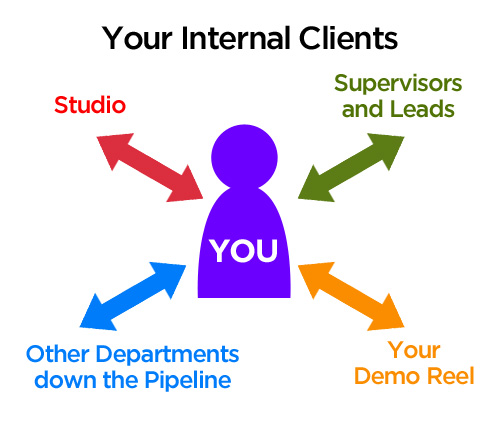
But there are others people and departments that I like to consider ‘clients’ too. These are:
The studio you work for: After all, you work for them, it is your job as an artist to do what they are tasking you with. If the work that you produce for them is of a high enough quality, it makes them look better. It will help them get the next show, and hopefully it will help you stay with them to work on that next project.
The people above you: Your Supervisors and Leads are relying on you to do your work on time and of good quality. If you do great work, chances are, these people will feel confident in your abilities and as a result, you may find yourself getting more hero work on that show. Casting you on a future show will be easier as a result. On the other hand, if you are difficult to work with, that will follow you too.
The people after you: If you pass work onto the next department that they can’t use, the shots you work on will return to you to fix or reanimate… If you do this on a consistent basis, you may find that your shots are given to other animators to redo. Ultimately, this does not reflect well on your abilities, it’s expensive to the studio, and potentially damaging to your career, so take pride in your work and don’t let sloppiness follow you.
Finally, Your Demo Reel: Yup – your reel is a client too… Good work that stands out will help you get onto your next show, so when you are animating, keep in mind that you are ultimately working to make your reel as strong as possible… But on the list of clients, your reel is last… After all, if your shots don’t make it into the show, you won’t be able to put it on your reel.
Tip #6: You’re Not Alone
Trust in Yourself. Yes, you will make mistakes. Yes, you’re going to feel like you don’t know what you are doing (very normal, especially with creatures). Yes, you are going to have issues finding source materials for your creatures. Yes, you are going to have times that you have NO IDEA what to do with your shots. This is where your Directors, Supervising Animators, Leads, Mentors, and other animators will be there to help you and pick you up… Animation is after all a “Team Sport”.
Find yourself a Mentor. I am still very good friends with my mentor. I was in the industry for years before I got up the courage to ask a senior animator to be that for me. It’s an “old school” way of working, but having a mentor: Someone you trust to help you see what you are doing right and wrong. A person who can help you see past the moment that you are in, both in your shots and in your career. And especially – someone who can be HONEST with you is more valuable than you can ever imagine.
Good Luck & HAPPY ANIMATING!
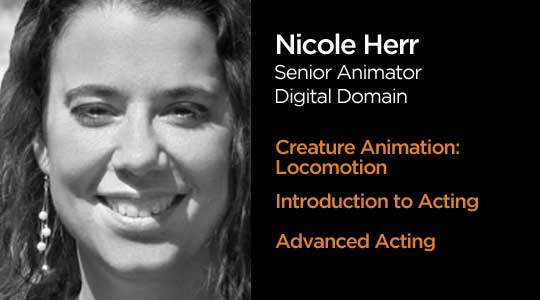
Nicole Herr is a 19+ year animation veteran and with more than 50 film credits to her name. You can see some of her work in Guardians of the Galaxy, Iron Man 2, and Legends of the Guardian: The Owls of Ga’Hoole. She is also a veteran mentor at Animation Mentor since 2007. She’s taught Creature Animation: Locomotion and Introduction to Acting, and Advanced Acting.
